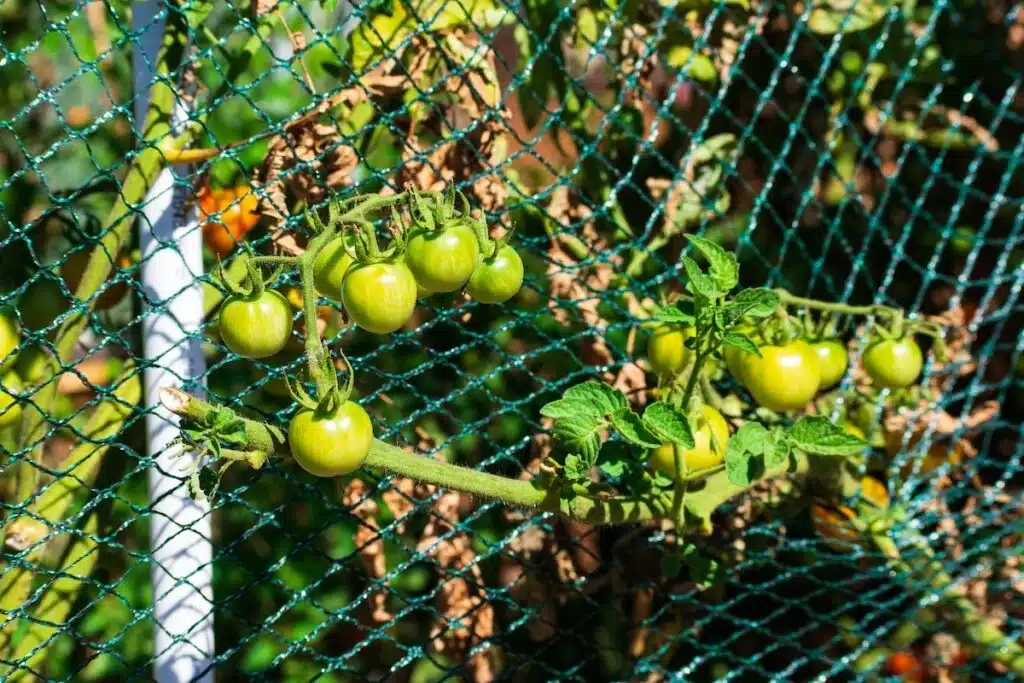Growing high-yield and quality tomatoes can present multiple challenges. As tomato plants mature, the weight of the fruits might cause the plants to topple or stems to bend. Moreover, you must not overlook the threat of pests and birds, as they can damage your fruits and reduce the harvestable tomato count. In this situation, netting for tomato netting becomes indispensable.
Don’t Miss: How to Protect Tomato from Hail Damage
Different types of tomato netting serve different purposes: some netting can support the plants, keeping them upright, while others safeguard mature tomatoes from pests and birds. So, what type of netting do you need for your tomato planting? In this article, let’s explore the common nets and how they work to protect your tomatoes.
Part 1: Tomato Trellis Netting
Whether cultivating tomatoes or other fruits and vegetables, trellis netting is necessary to prevent the fruit from overwhelming the stems and save garden space. From vertical trellises to spirals, cages, and even ladders or V-shaped supports, each type boasts unique advantages tailored to the various growth stages of tomato plants. Now, let’s get started exploring their benefits.
1. Vertical Crop Netting
Vertical trellis nets, commonly crafted from metals, wood, or plastics, bolster tomato plant growth. Their crucial attributes, including height, width, and mesh size, should align with the plants’ specific growth requirements. These nets can ensure plants grow upright and minimize ground contact, thus reducing disease risks and fostering uniform fruit ripening.
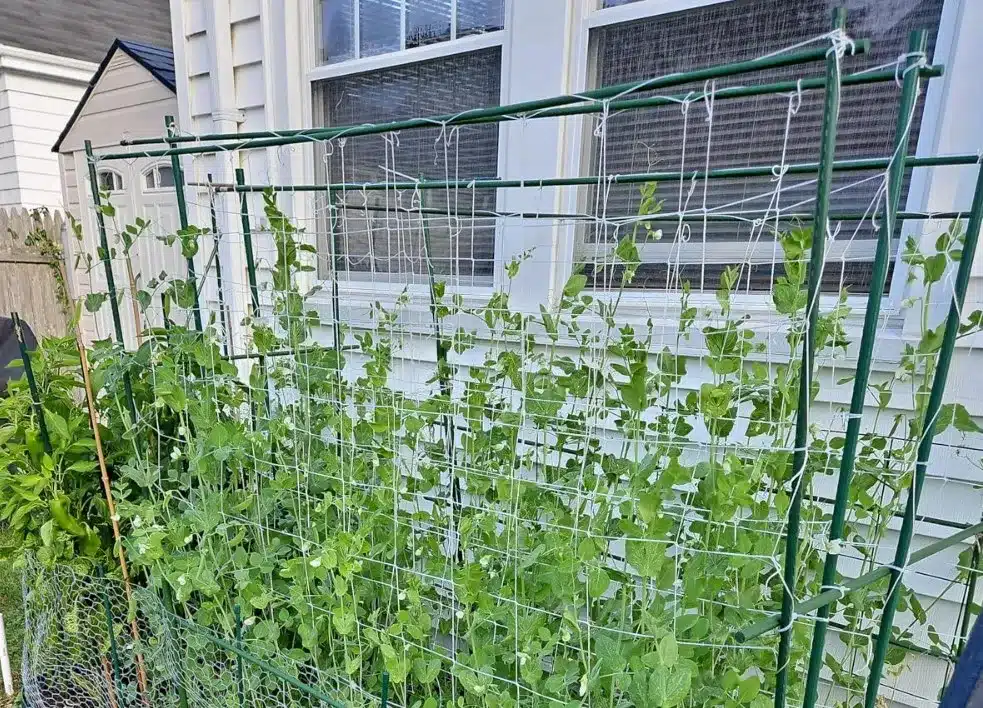
Vertical Trellis Nets
2. Spiral Supports
Spiral supports, celebrated for their distinct spiral design, excel in confined spaces. Made from durable metal, they’re designed for easy soil insertion, providing steadfast support as tomato plants burgeon. Ideal for tomatoes in their initial growth phases, spirals prevent sagging while promoting airflow and disease mitigation through their open design.
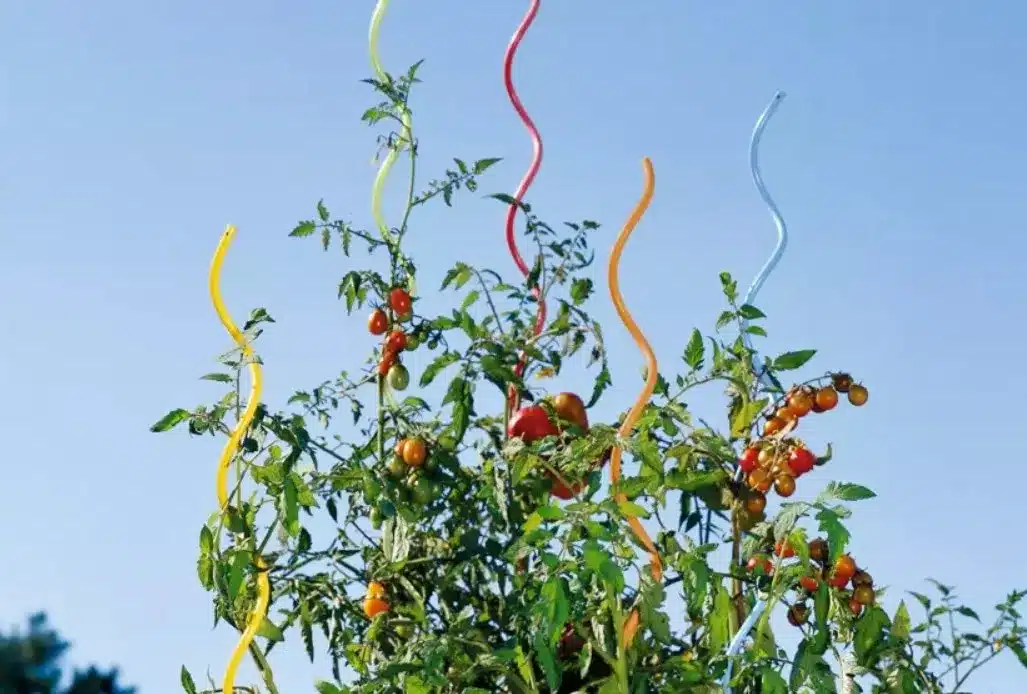
Spiral Supports for Tomato
3. Cage Supports
Cage supports encircle the plant with a metal or plastic framework, resembling a cage. This design fully encompasses the plant, offering all-around support, especially beneficial for mature tomato plants. Utilizing cage supports, each plant segment receives ample backing, supporting the weight of heavier fruits and curtailing disease and pest issues from excessive contact.
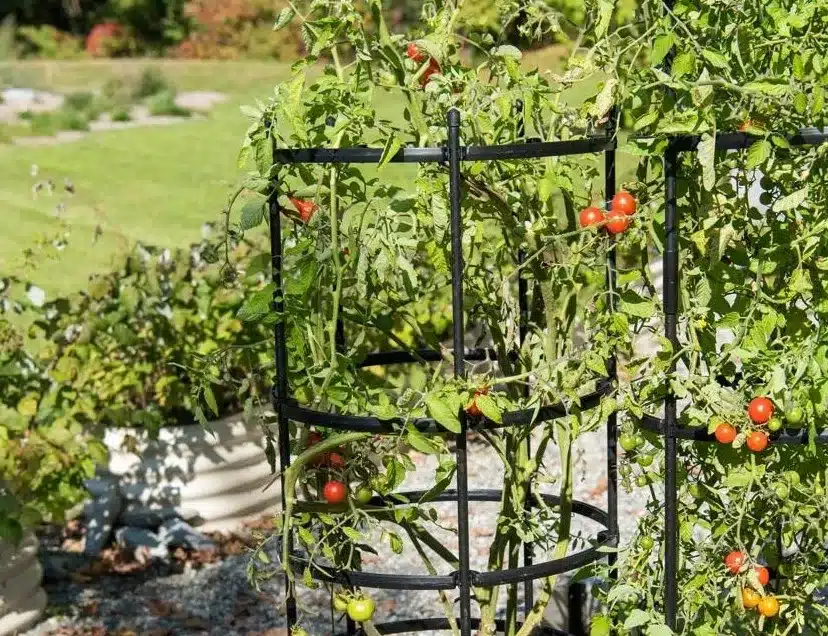
Cage Supports
4. Ladder or V-Shaped Supports
Engineered to maximize space, ladder- or V-shaped supports are especially useful in greenhouses or outdoor row cultivation. Their distinct architecture secures tomato plants vertically and enhances air movement among plants, significantly reducing the incidence of fungal and bacterial diseases. Employing ladder or V-shaped supports ensures healthier plant growth and streamlines management and harvesting efforts.
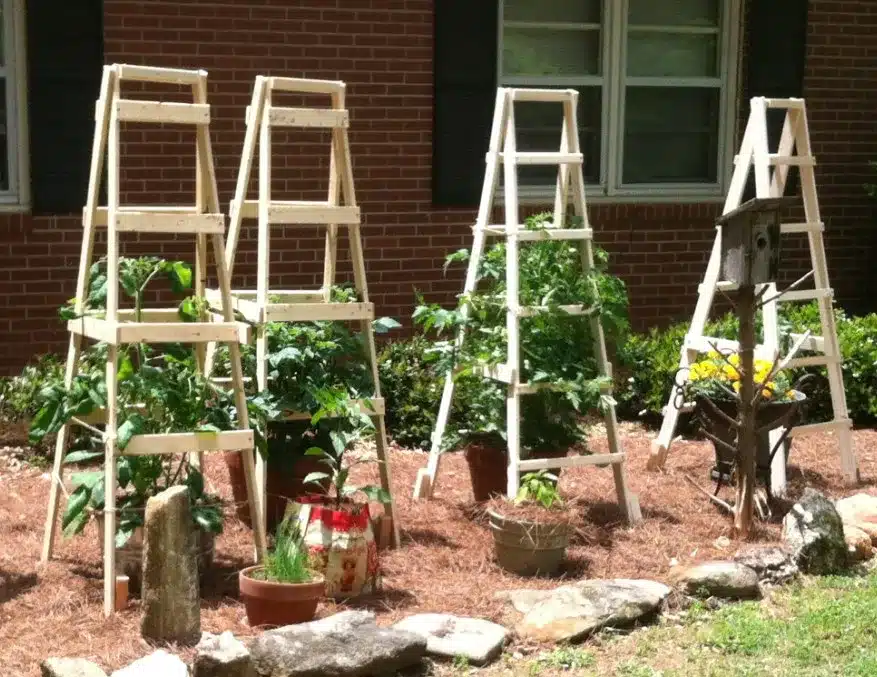
Ladder or V-Shaped Supports
In addition to the trellis netting mentioned above, you may also find some other types. If you are skilled at crafting, you can make them yourself. Of course, you can also easily purchase these products from a nearby garden store or online shop.
Part 2: Tomato Protection Netting
Beyond trellis netting for healthy tomato growth, protective netting is indispensable, especially when growing in open fields. Protective netting shields tomatoes from birds, insects, and small animals while they are growing. Embracing a proactive approach – ” prevention is better than cure” – and considering protective nets early can significantly reduce future challenges. Below, we will explore common types of agricultural protective netting, their specific roles, and application methods for safeguarding tomatoes.
1. Tomato Bird Netting
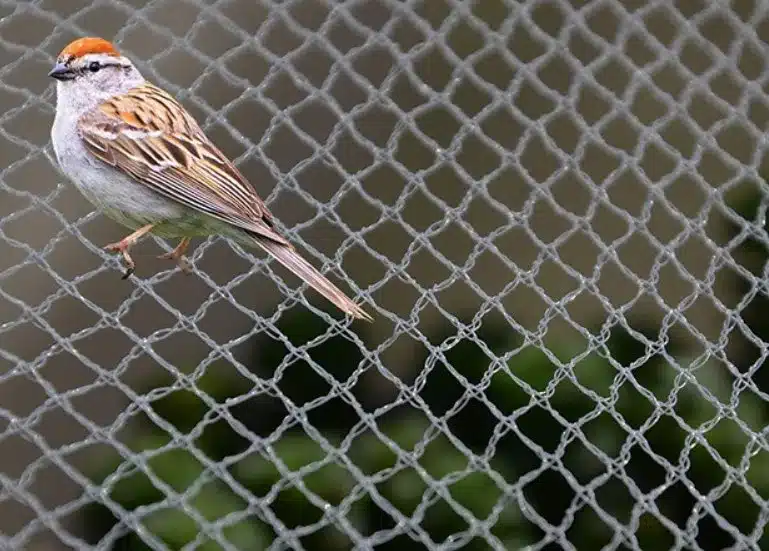
Anti-Bird Netting Mesh
Bird netting is designed to protect ripe fruits from birds. Made from lightweight but strong materials like nylon or polypropylene, it prevents birds from accessing and pecking at your tomatoes. When installing bird netting, it’s crucial to cover the plants fully, leaving enough space around them to deter birds from entering. It’s best to set up the netting as the plants start bearing early fruits, ensuring continuous protection until harvest.
Related Knowledge: How to Choose Bird Netting for Tomato?
2. Insect Netting for Tomato
The main goal of insect netting is to shield growing tomatoes from pests, especially those spreading viruses and diseases. These nets typically feature finer meshes to block aphids, whiteflies, and other pests while still allowing air and light through. When choosing insect netting, consider the mesh size and the material’s breathability and durability. Install insect netting early in the plant’s growth phase for early protection, and check and maintain it as needed for effectiveness.
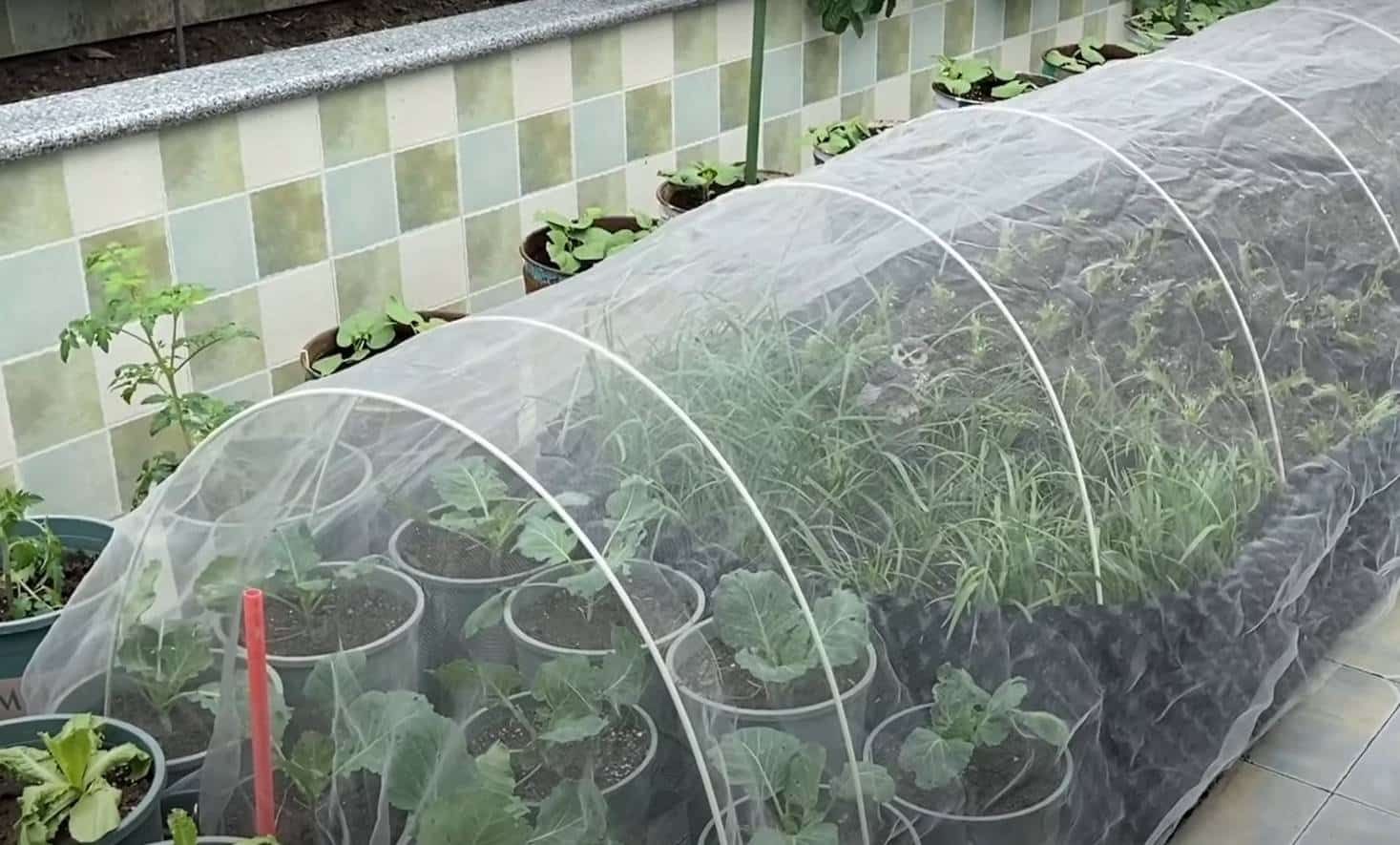
anti insect netting for garden plants
3. Squirrel Netting for Tomato
Squirrels and other small animals can severely damage tomato plants, and squirrel netting is designed to keep these critters at bay. Usually made from heavier materials like metal or thick plastic mesh, it has enough strength to resist gnawing. Installing squirrel netting requires securing it tightly around the plant’s base and possible entry points, sometimes burying part of the net underground to prevent digging. Like other protective nets, the success of squirrel netting relies on proper installation and regular inspection.
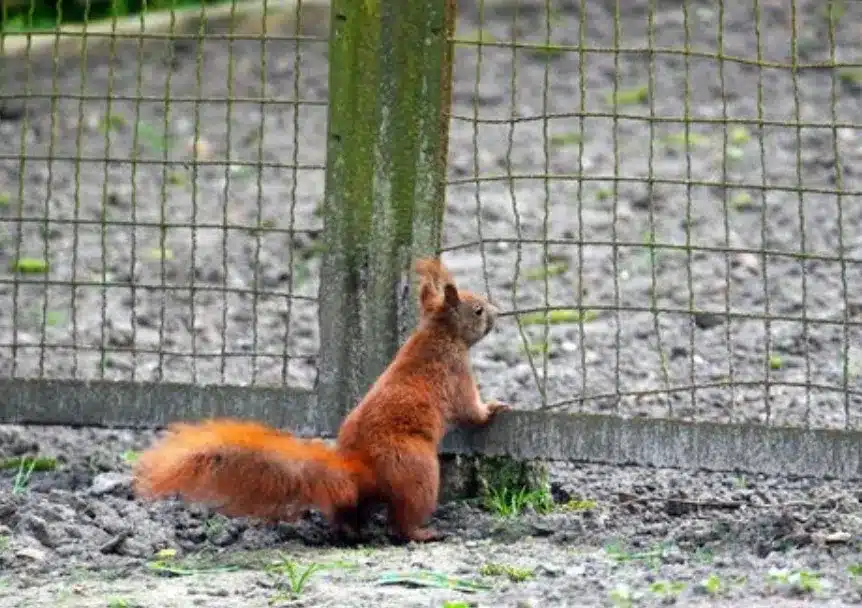
Metal Squirrel Netting
Usually, bird netting is effective for keeping squirrels away from tomatoes, but squirrel netting requires even tougher and more durable material. If your area has a high population of squirrels, you might want to use metal mesh specifically for squirrel protection. This method provides a strong barrier against these agile invaders.
4. Shade Netting
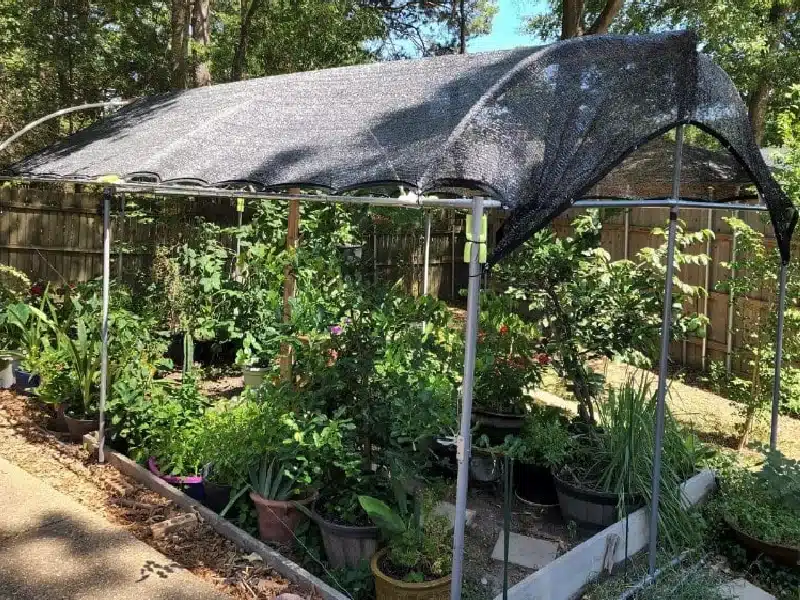
Shade structure for garden
In hot seasons, shade nets can reduce direct sunlight exposure, preventing excessive photosynthesis that can lead to rapid water loss and spindly growth, promoting healthier plant development. Additionally, shade nets help lower fruit drop rates and boost early yields, enabling tomato plants to produce high-quality, uniform fruit. Finally, the study shows that different colors and shading levels are suited to specific growth needs: red nets enhance fruit quality, while white nets are ideal for maximizing early yield.
5. Hail Netting
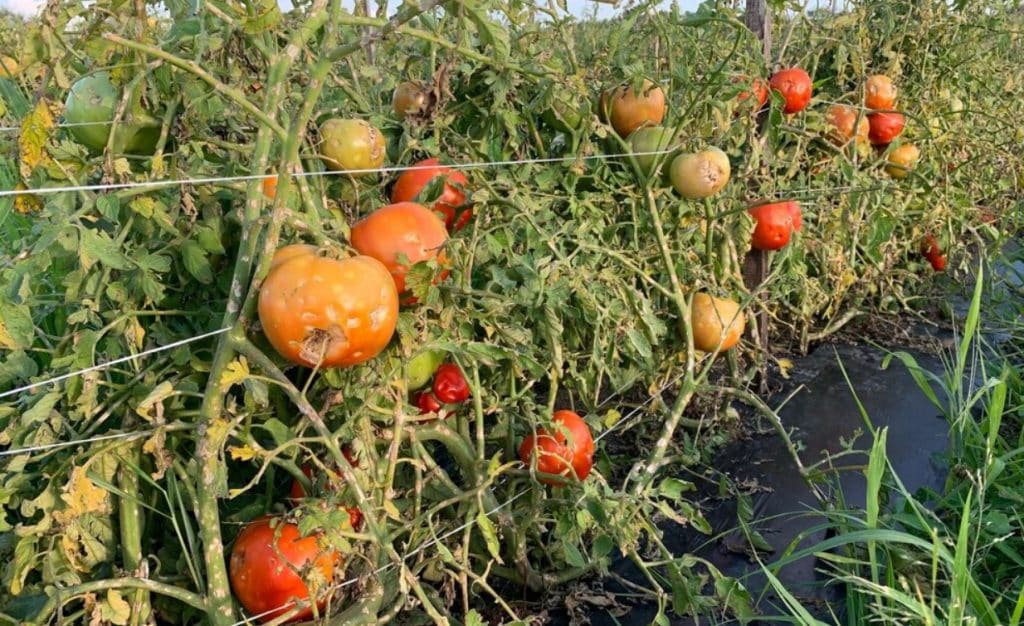
Tomatoes Damaged by Hail Storm – Sogn Valley Farm
Agricultural hail netting is designed to protect crops from damage caused by hailstorms. Made from high-strength HDPE material, this netting effectively shields tomato plants from direct hail impact, reducing the risk of bruising, breaking, or deforming the fruit. It is especially valuable in regions prone to frequent hail during summer, offering reliable protection to maintain plant health and crop quality.
How to Choose the Right Tomato Net
Selecting the right tomato net involves identifying your biggest challenges in growing tomatoes, whether it’s supporting the plants to prevent them from falling over or protecting them from pests, birds, and small animals. This decision directly influences the type of net needed. For instance, vertical trellis nets or cages are ideal for support, helping plants grow upright, while insect or bird netting is better for areas facing significant pest or bird threats. Sometimes, you might need both types of nets or other protective measures.
Additionally, when selecting tomato netting, consider the material, durability, size, and adaptability to your growing environment. The ideal net should withstand harsh weather conditions, allowing sufficient sunlight and airflow for healthy plant growth. Assess the growth space and anticipated size of your plants, choosing a net that can adjust to plant growth or sufficiently cover them. Different growing environments and plant growth stages may require various types and sizes of nets, so flexibility in choice is key to ensuring the solution best fits your current and future planting conditions.
More Tomato Netting Knowledge
1. How to DIY Tomato Support?
If you’re on a budget or enjoy DIY projects, making your tomato support is a great option. Use materials you already have, like wooden sticks, bamboo poles, or even old metal frames, combined with rope or woven netting, to create a structure tailored to your garden’s needs. Besides being cost-effective, homemade nets allow customization to your specific space and tomato varieties.
2. Where to Buy Tomato Netting?
A wide range of pre-made tomato netting options is available on the market. From professional gardening stores to online platforms like Amazon and eBay and even local gardening centers, you can find various types and sizes of tomato nets.
For instance, on Amazon, tomato support netting prices range from $0.05 to $0.2 per square foot, while protective netting is around $0.45 per square foot. For large quantities, you can directly contact our Chinese factory to get a very low factory price.
3. How to Install Netting Over Tomato Plants?
Proper installation is crucial to ensuring the effectiveness of tomato netting. During installation, ensure the netting closely covers the plants without restricting natural growth or damaging the plant tissue. Pay special attention to securing bird and insect netting, avoiding gaps, and maintaining enough distance to prevent direct contact with pests or birds.
Conclusion
Generally, since open-field tomato cultivation exposes the plants to more potential threats, you may need a wider range of growth or protective nets. In a greenhouse setting, many natural environmental risks are minimized due to the greenhouse’s protective structure, so the primary nets required are usually insect netting and shade netting.
High-quality tomatoes, like those at Sam’s Club, are typically produced by large commercial greenhouses. Therefore, if you’re considering commercial tomato farming, it may be beneficial to consult with greenhouse manufacturers for support.
